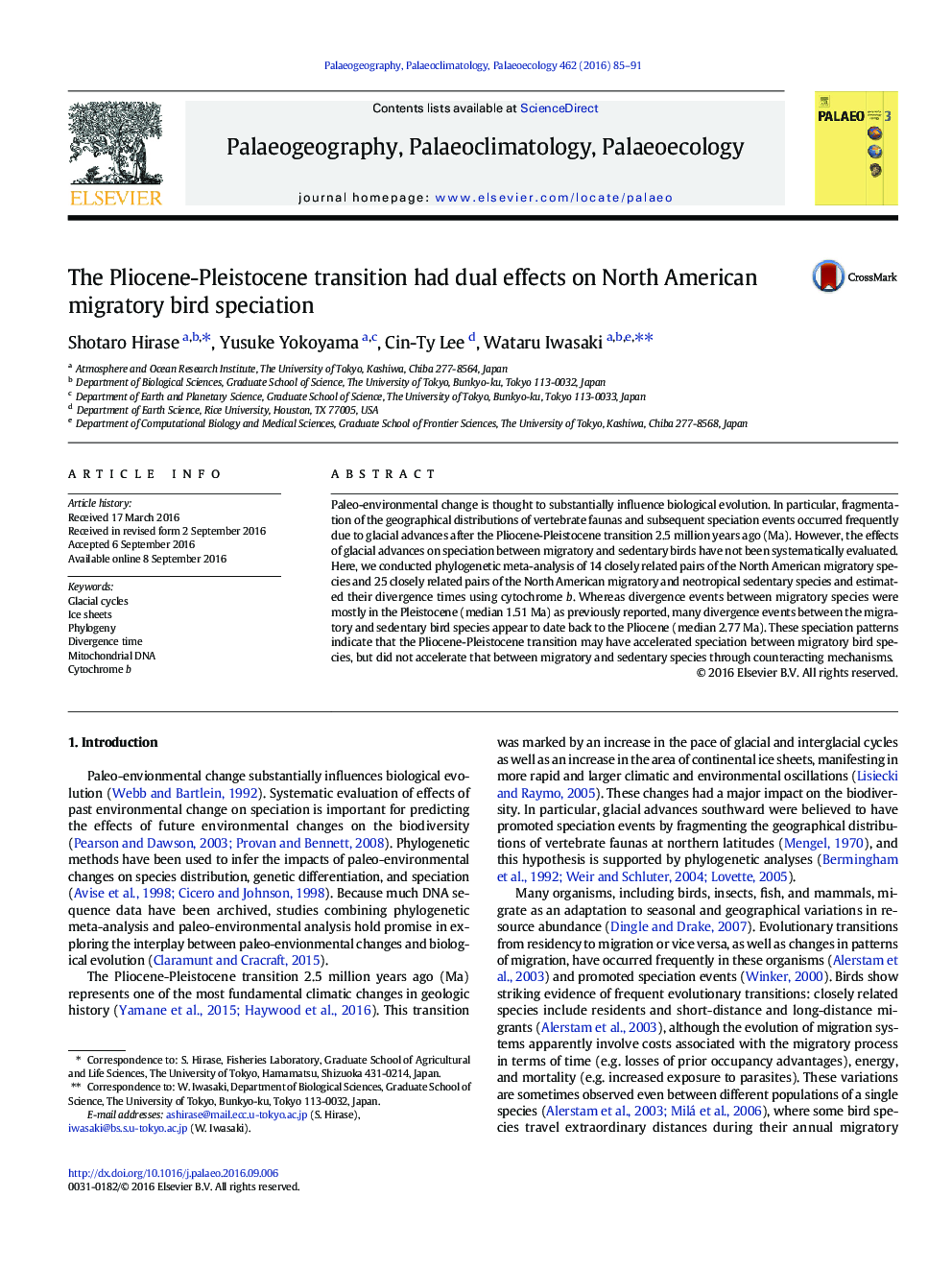| Article ID | Journal | Published Year | Pages | File Type |
|---|---|---|---|---|
| 4465511 | Palaeogeography, Palaeoclimatology, Palaeoecology | 2016 | 7 Pages |
•Pliocene-Pleistocene transition had diverse effects on biological evolution.•Phylogenetic meta-analysis of migratory and sedentary birds was conducted.•Unexpectedly, the transition did not accelerate speciation between them.•The larger temperature difference in the Pleistocene would have formed an ecological barrier.•Rapid accumulation of DNA data will make phylogenetic meta-analysis more powerful.
Paleo-environmental change is thought to substantially influence biological evolution. In particular, fragmentation of the geographical distributions of vertebrate faunas and subsequent speciation events occurred frequently due to glacial advances after the Pliocene-Pleistocene transition 2.5 million years ago (Ma). However, the effects of glacial advances on speciation between migratory and sedentary birds have not been systematically evaluated. Here, we conducted phylogenetic meta-analysis of 14 closely related pairs of the North American migratory species and 25 closely related pairs of the North American migratory and neotropical sedentary species and estimated their divergence times using cytochrome b. Whereas divergence events between migratory species were mostly in the Pleistocene (median 1.51 Ma) as previously reported, many divergence events between the migratory and sedentary bird species appear to date back to the Pliocene (median 2.77 Ma). These speciation patterns indicate that the Pliocene-Pleistocene transition may have accelerated speciation between migratory bird species, but did not accelerate that between migratory and sedentary species through counteracting mechanisms.
